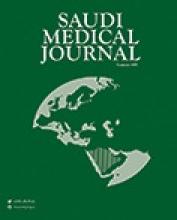Abstract
OBJECTIVE: Toxoplasma is a globally distributed pathogen for humans and animals. In situations of immunodeficiency, Toxoplasma gondii (T. gondii) emerges as a life-threatening infection. Toxoplasma gondii is transmitted parenterally, flourish in state immunosuppression and, most toxoplasma infections are asymptomatic. In the present study, we aimed to investigate the prevalence of anti-T. gondii antibodies in hemodialysis patients with chronic renal failure. We undertook a prospective study of our maintenance hemodialysis patients to determine whether these sources posed a risk for transmission of T. gondii.
METHODS: This study was carried out on patients undergoing regular hemodialysis in the dialysis units (Hemodialysis Center of Antakya State Hospital, Emir Hemodialysis Center and Antakya Hemodialysis Center, Hatay, Turkey) between January 2004 and June 2004. Two hundred and fifty-five hemodialysis patients and 50 healthy controls were studied for the prevalence of anti-T. gondii antibodies by enzyme-linked immunosorbent assay.
RESULTS: Anti-immunoglobulin G (IgG) and immunoglobulin M (IgM) T. gondii antibodies positivity were found to be 195 (76.5%) of the 255 hemodialysis patients and 24 (48%) of the 50 control subjects. The difference between them was statistically significant (p<0.05). In addition, an increase of the seropositivity rate was detected with increasing length of time on hemodialysis treatment, indicating a statistically significant difference between these 2 parameters (p<0.05).
CONCLUSION: These findings confirm a high prevalence of toxoplasma infection in hemodialysis patients. These patients are a risk group for toxoplasma infection. Moreover, it is recommended that hemodialysis patients who are susceptible to toxoplasma infections should be identified by T. gondii IgG and IgM specific serological tests. Therefore, patients undergoing hemodialysis should be screened for toxoplasma before dialysis to prevent the dissemination of this infection through the hemodialysis procedure.
- Copyright: © Saudi Medical Journal
This is an open-access article distributed under the terms of the Creative Commons Attribution-Noncommercial-Share Alike 3.0 Unported, which permits unrestricted use, distribution, and reproduction in any medium, provided the original work is properly cited.






